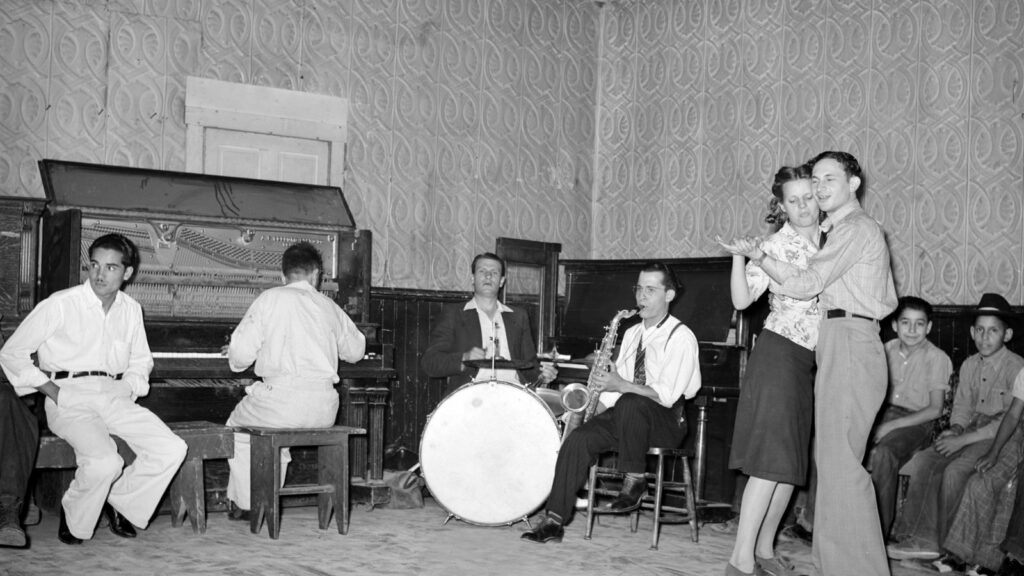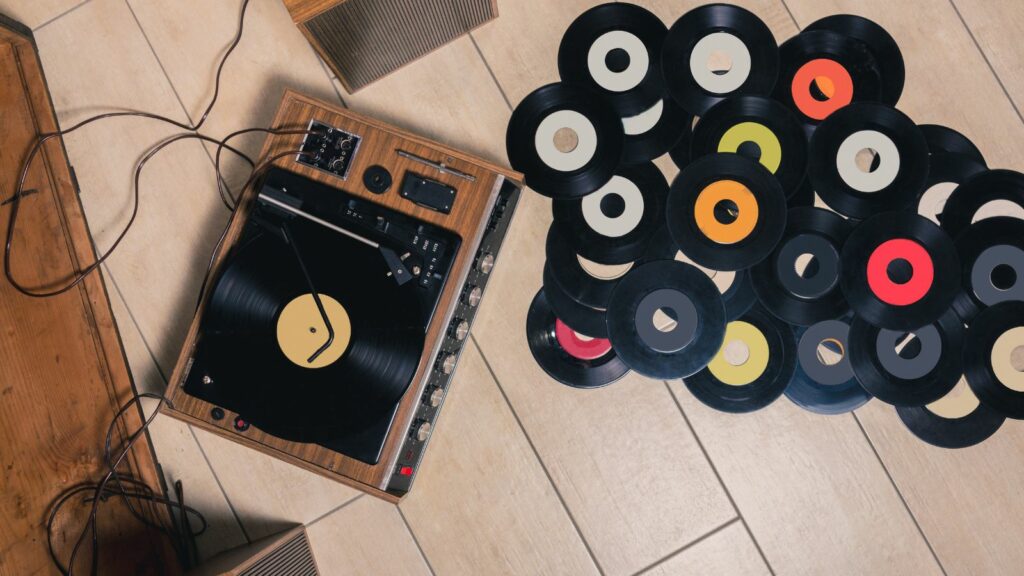The 1960s, a decade of colorful revolution and seismic shifts in societal norms, was also a golden era for music. But how did people listen to music in the 60s.
The Rise of Rock and Pop
As the musical landscape of the 1960s evolved, rock and pop music ascended to new heights, reshaping the world’s auditory preferences.

With their debut in early 1964, the Beatles spearheaded the British invasion, a wave of British music bands making it big in America. Their unique blend of rock-n-roll, combined with their innovative songwriting prowess, captivated audiences globally. Their appeal stretched far beyond their catchy tunes, influencing fashion, social attitudes, and even language. It’s fair to say, in the 60s’ rock and pop realm, the Beatles were a defining, transformative force.
Late in the decade, 1969 to be precise, the Woodstock Music & Art Fair took center stage, symbolizing the counterculture generation’s ideals of peace, love, and unity through music. Known widely as Woodstock, this iconic three-day festival attracted over 400,000 attendees, showcasing acts from major artists such as Jimi Hendrix and Janis Joplin.
The Mediums: How People Listened to Music

Vinyl records marked their supremacy during how did people listen to music in the 60s. Long-playing records, Known as LPs, stored more music and improved the listening experience. Artists like The Beatles capitalized on this platform, offering listeners an immersive musical journey. Not only did vinyl records provide quality sound, they encapsulated the raw, soulful, and experimental spirit of the era’s music. From the tactile feel of the record to the intricate album art, vinyl records represented a tangible connection to the music that digital platforms can’t replicate.
Transistor radios emerged as another popular medium for experiencing music in the 60s. Compact, portable, and far less expensive than large vinyl record players, they allowed listeners to tune in to their favorite local radio shows and music broadcasts from virtually anywhere. This technological advancement fostered an intimate relationship between artists and audiences and was especially instrumental in promoting rock and pop music. Through transistor radios, large-scale music events like the Woodstock Music & Art Fair reached thousands more, amplifying the counterculture generation’s ideals of peace, love, unity—and, most importantly, their groundbreaking music.
Important Music Producers and Labels in the 60s
Motown Records: Revolutionizing the Sound
Established in 1959, Motown Records emerged as a groundbreaking label in the 1960s. It broke conventional rules by introducing a new platform catering to Black artists, a rarity in an industry defined by stark racial divides. The label, founded by Berry Gordy, championed a unique sound known as the “Motown Sound”. This was a soulful merger of pop, soul, and R&B genres coupled with polished production and memorable melodies. Artists including Stevie Wonder, the Supremes, and the Temptations were nurtured under Motown Records, making it a powerhouse of talent.
Phil Spector and the Wall of Sound

The Wall of Sound, a confluence of layered instruments and harmonies, marked Phil Spector’s signature contribution to the music world in the 60s. Spector, a noted music producer, spearheaded this innovative technique in music production, aiming to create a dense aesthetic sound that stood out even on tinny transistor radios.
Spector’s method involved assembling a large group of musicians playing an array of instruments, layered together in the studio to emulate a full orchestra. The result was a rich, echo-filled sound that, when played on a radio or jukebox, retained its sonic depth and intricacy — a remarkable feat at the time.
By utilizing orchestral arrangements and studio enhancements, Spector’s Wall of Sound left a profound impact on the 60s music scene.
Music Connection
How did people listen to music in the 60s is a burning question. The 60s were a turning point in music consumption, driven by societal shifts and technological advancements. As vinyl records and transistor radios became prevalent, they transformed the way people connected with music. The era saw rock and pop music, led by iconic bands like The Beatles, rise to prominence, mirroring the counterculture’s values. Events like Woodstock encapsulated the spirit of the time, embodying ideals of peace, love, and unity through music.

